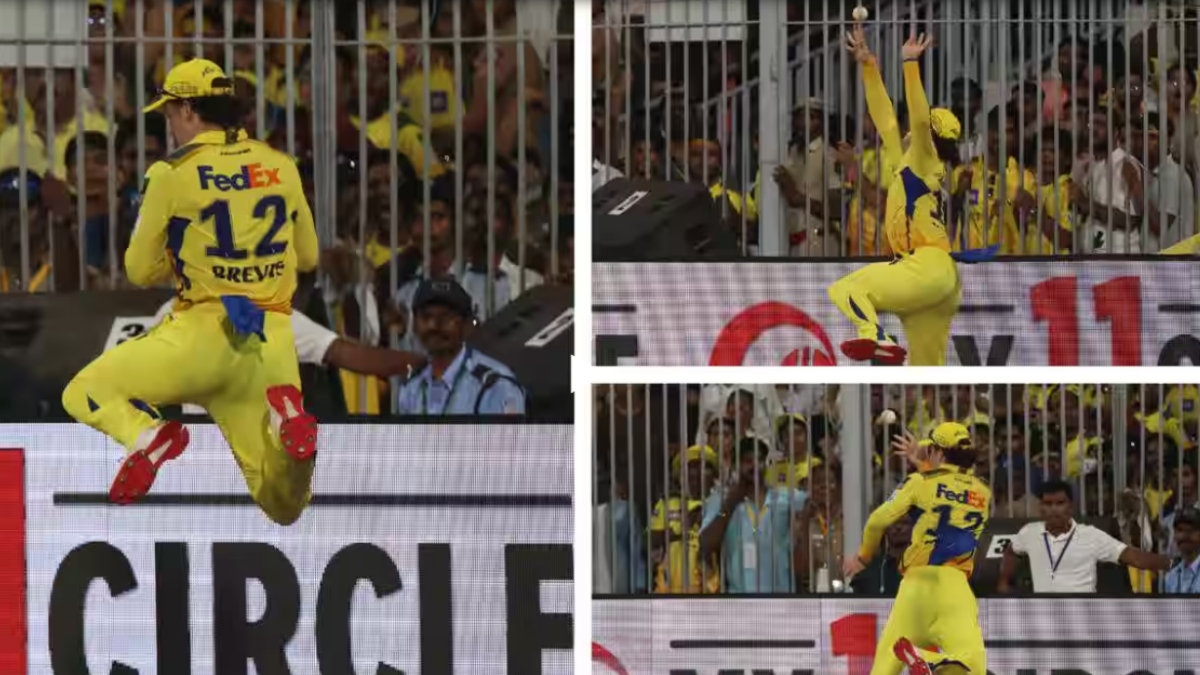Cricket rule update: MCC makes amendments to boundary catch rules, spectacular 'bunny-hop' takes to become...
 Dewald Brevis' catch against the Punjab Kings was among the memorable moments of IPL 2025 | IPL official website
Dewald Brevis' catch against the Punjab Kings was among the memorable moments of IPL 2025 | IPL official website
Remember the spectacular catch taken by Dewald Brevis against the Punjab Kings in IPL 2025?
The highlight of that stunning effort was how the South African star used his reflexes to stay mid-air while taking multiple touches of the ball outside the boundary line without touching the ground, eventually taking the catch inside the rope. The key factor there was that Brevis knew he had to ensure he remained inside the playing area while taking the catch, but could do anything to get the job done as long as he wasn't making contact with the ground.
According to the new playing regulations set by the MCC, catches like these will henceforth be deemed invalid.
This category of catches, termed 'bunny-hop' by the lawmaking body, will now have a key amendment to the rule. While fielders can still go past the rope after parrying the ball in, they can only do this once. Meaning attempts like Brevis' catch where he repeatedly went past the rope, will not be legal anymore. Another similar catch was seen in BBL 2023 where Michael Neser went well beyond the boundary rope to take the catch like Brevis. It had sparked great controversy at the time, but the laws suggested it was a fair catch.
Not anymore!
In this era of extraordinary fielding efforts, the MCC also had to ensure that they weren't compromising the creativity of fielders worldwide. This rule change does strike a balance between legality and entertainment.
"Our solution has been to limit any fielder who has gone outside the boundary to touching the ball while airborne only once, and then, having done so, to be wholly grounded within the boundary for the rest of the duration of that delivery." said the MCC statement.
This rule holds even for tag-team boundary catches. The fielder who relays the ball can only go outside the rope once during the duration of the delivery. Any second contact outside the rope, even if not touching the ground, will be deemed illegal.
"Even if the ball is parried – to another fielder or inside the field of play – if the fielder lands outside the boundary, or subsequently steps outside, then a boundary will be scored. For clarity, that means the fielder gets one chance, and one chance only, to touch the ball having jumped from outside the boundary. After that point, the boundary becomes a hard line – and any time they touch the ground in that delivery, whatever else happens, they must be inside."
What does the new law state?
The ICC playing conditions officially come into effect in October every year, but other forms of professional cricket may implement this by next week.
Law 19.5.2 states that a fielder not touching the ground is considered beyond the boundary if their last ground contact before touching the ball was not entirely within the boundary. This applies to all fielders contacting the ball after the bowler's delivery.Section 19.5.2.1 of the law specifies that if a fielder's initial ball contact complies with 19.5.2, they may jump from outside to touch the ball while airborne. However, all subsequent ground contact must occur within the field of play until the ball becomes dead, or a boundary will be scored.Section 19.5.2.2 further stipulates that if a fielder jumping from outside the boundary returns the ball to play, they must land and stay within the boundary until the ball becomes dead, or a boundary will be awarded.
"Our solution has been to limit any fielder who has gone outside the boundary to touching the ball while airborne only once, and then, having done so, to be wholly grounded within the boundary for the rest of the duration of that delivery."
Sports